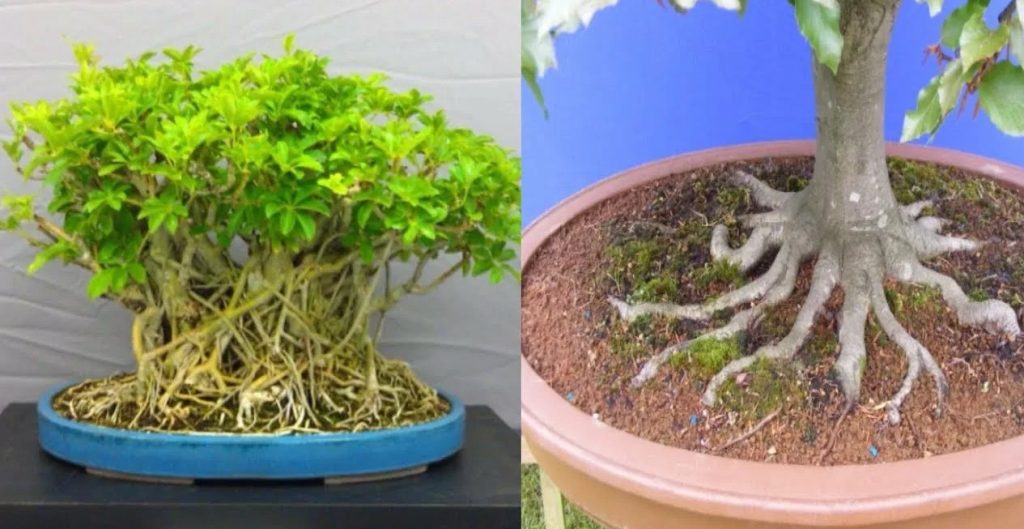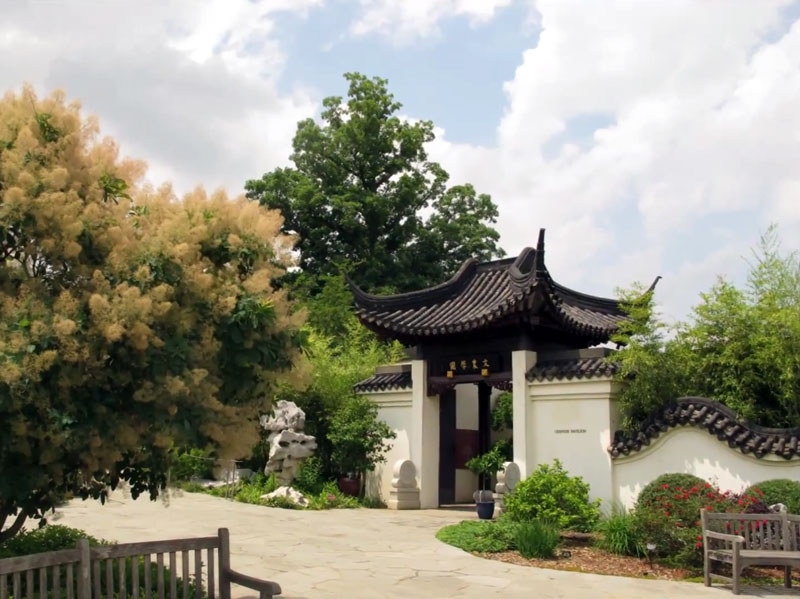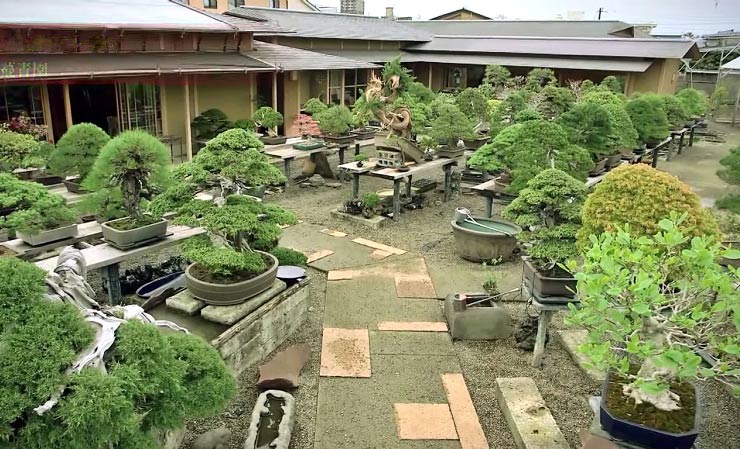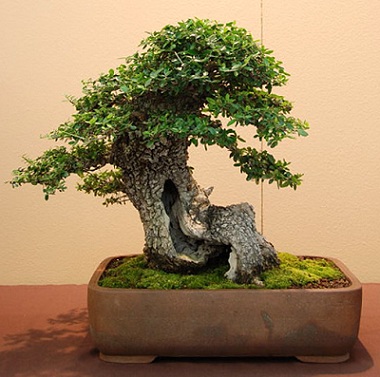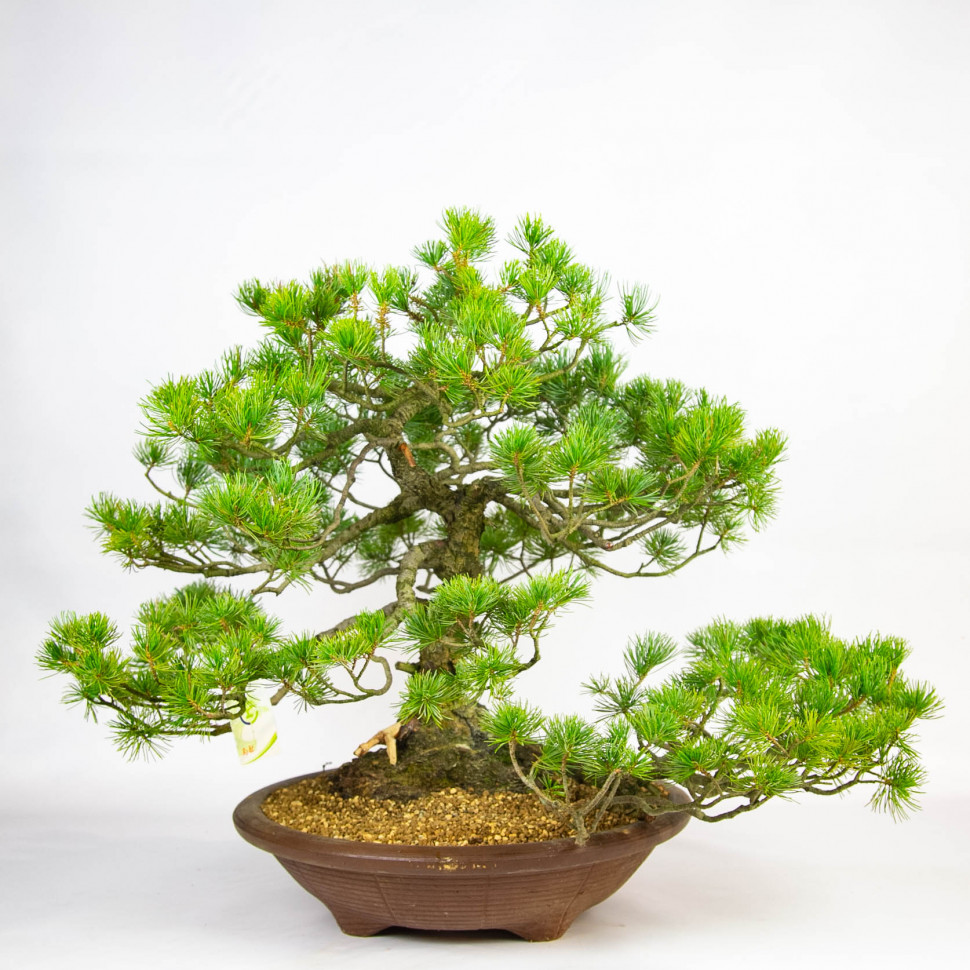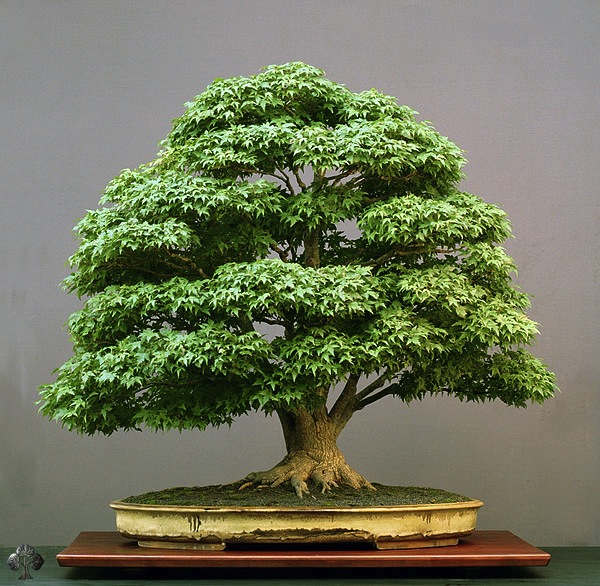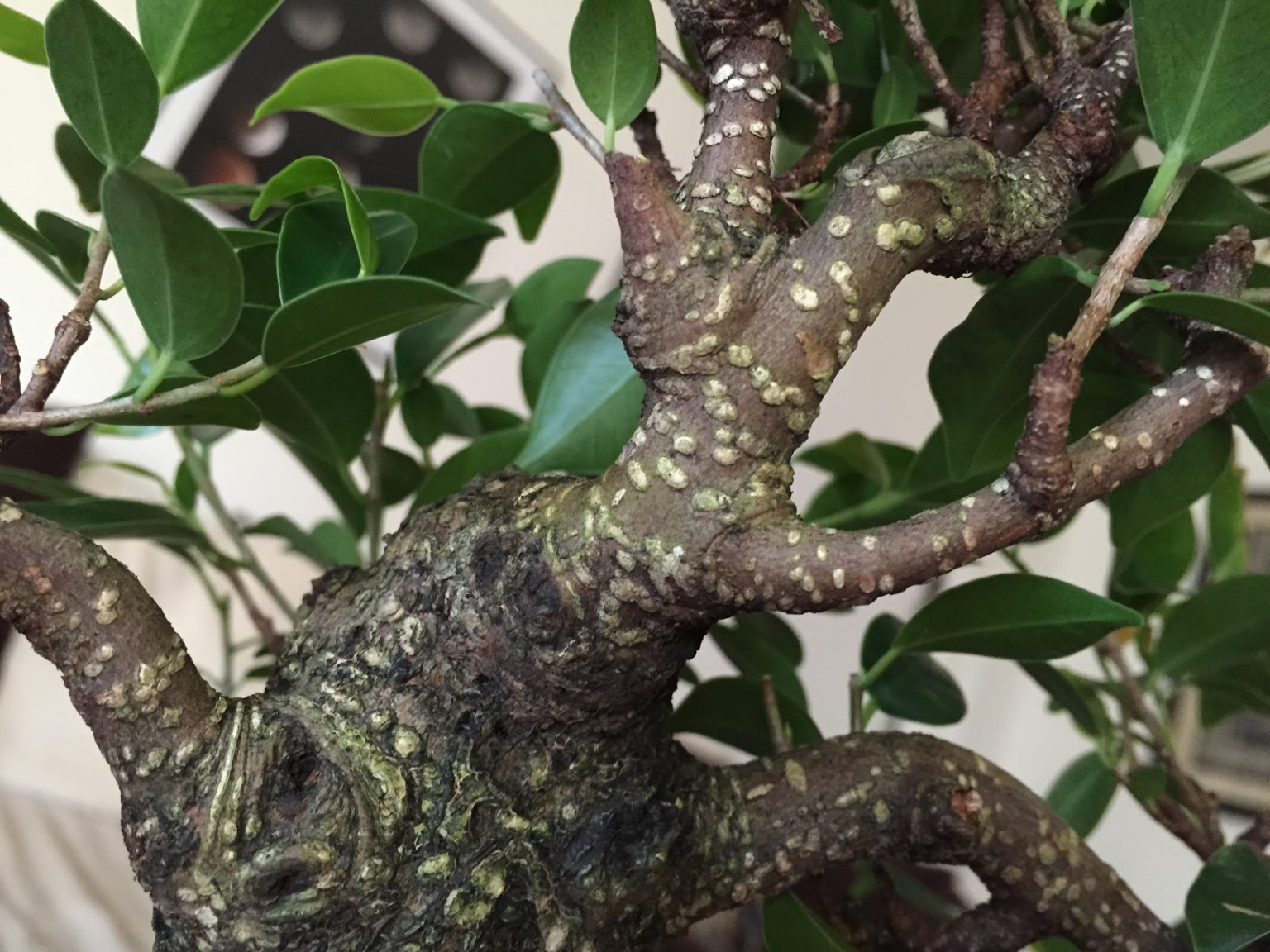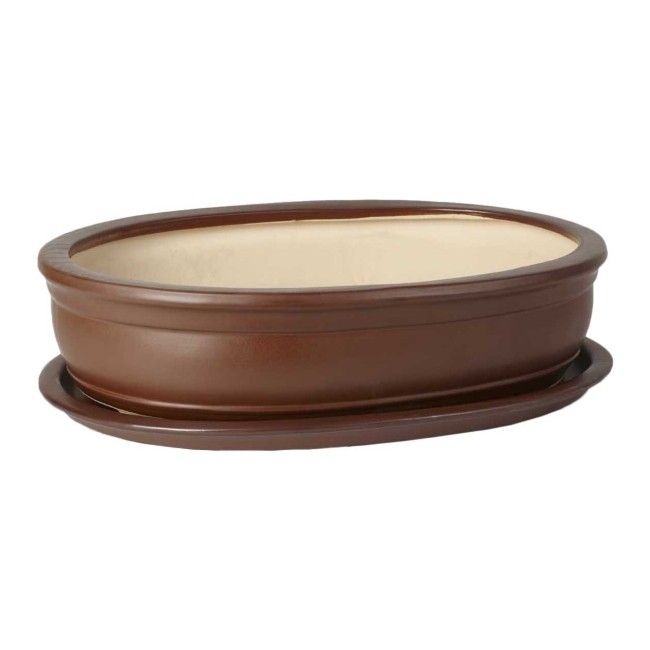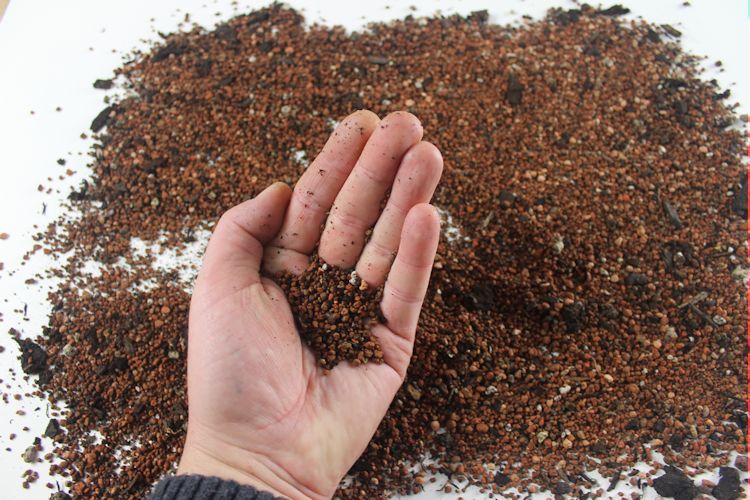Formation of the crown is a priority when creating and growing bonsai at home. The beauty and health of the plant depend on how the branches are arranged, since the optimal number of leaves is created, which allows the plant to breathe normally and receive sunlight. The root system, and therefore the tolerance of bonsai, directly depend on the number of branches and shoots. After all, it is known that the root structure of the tree reflects the shape of the crown. In order for the tree to be branched, the roots, like the crown, should be pinched. This stimulates the growth of new branches.
When growing bonsai, strong and expressive roots are given great importance in the art of bonsai. Such roots are called Nebari.
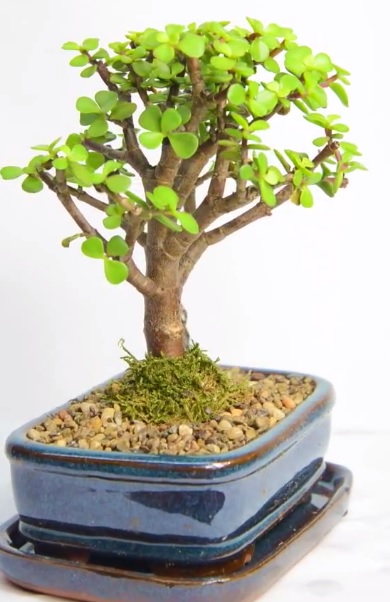
Trimming
To ensure the growth of new branches, pruning is necessary. To make the tree look natural, pruning of young branches is done as follows: in the upper part of the plant to the first internode and to the second in its lower part. This should be done three times a year. When the bonsai grows up Divide the tree into three parts and at the lower level trim the branches to the third internode.
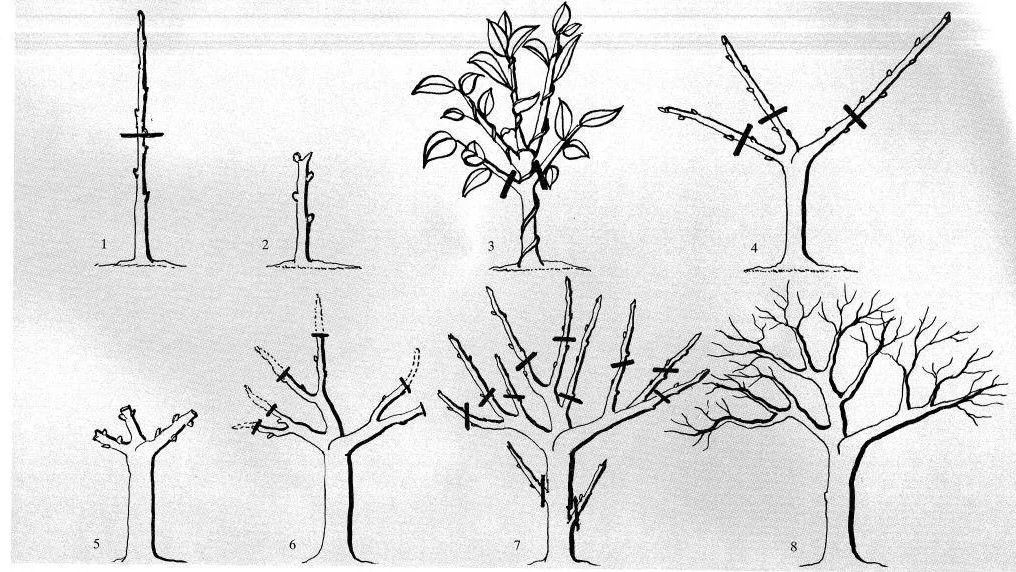
In this way you will be able to achieve the greatest resemblance to trees that grow in their natural environment. To maintain the shape, you should thin out the crown and prune it every year.
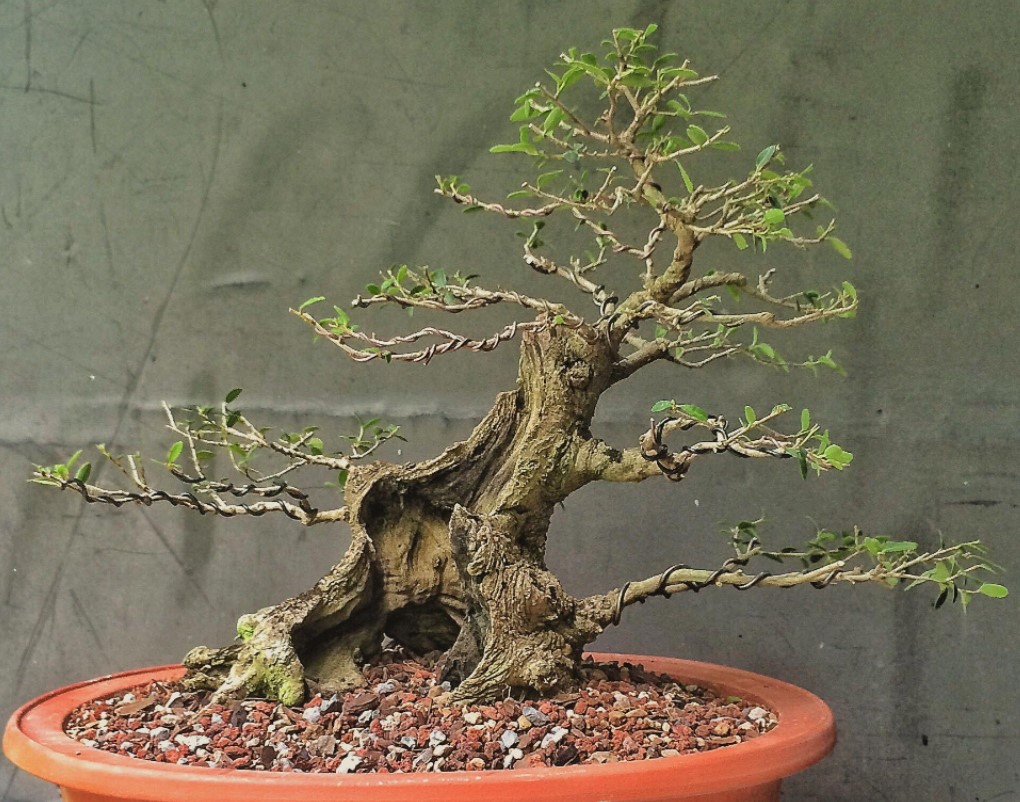
Pinching
Plants with scaly leaves should be pinched, as their shoots do not grow from the side buds. If you do not pinch, the branches will be too long. Do this three times a year in spring and summer, for better foliage development.
Cut off mature, woody shoots. to the first internode, if the tree is healthy, and to the second - if it is not distinguished by vitality
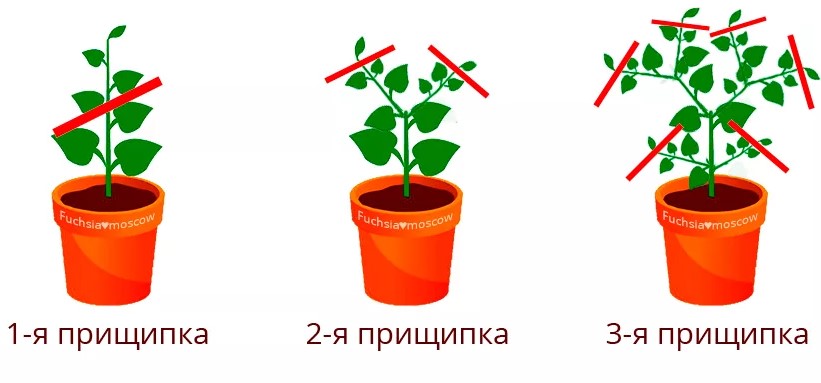
Trimming leaves and shoots
Pruning of leaves should be done once a year on young and healthy plants. If the bonsai is alive and already formed, then do it once every two to three years. To keep the juices flowing to the outer part of the crown, many leaves should be left at the end of each branch.
Before you start pruning shoots, you need to decide on its purpose:
- If you want to encourage vigorous growth, you should trim them below leaf level.
- Leaving a few internodes will make growth less active.
To help the young plant develop and grow stronger faster, try not to hinder the growth of the shoots.
It is best to have an idea of what your bonsai should look like. You can shape it based on a drawing or photograph of the tree you want to resemble.
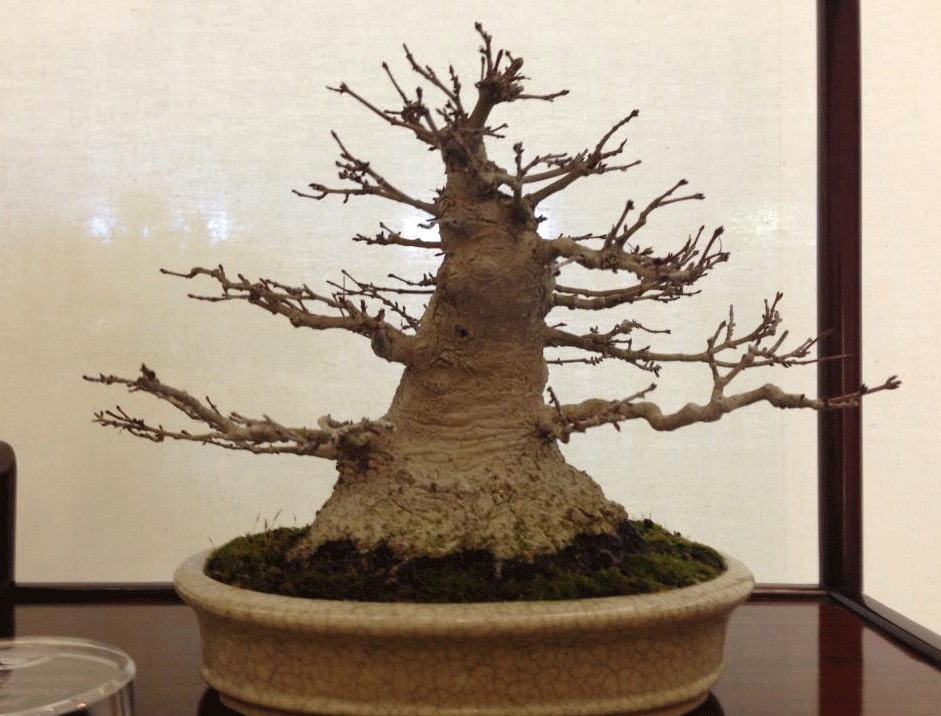
You should start pruning from the top of the bonsai, leaving one or two pairs of leaves on each shoot. Leave three internodes at the bottom. When the young shoots grow to five internodes, prune them in the same way. Do this until you achieve the desired shape.
Pruning branches
Prune branches when they interfere with the formation of shoots or when it is necessary to preserve the shape of the bonsai. Trim very thick or too thin branches completely. In extreme cases, trim all branches and begin to form a home bonsai. To ensure that the dwarf tree remains healthy, the cut areas should be treated with special preparations.
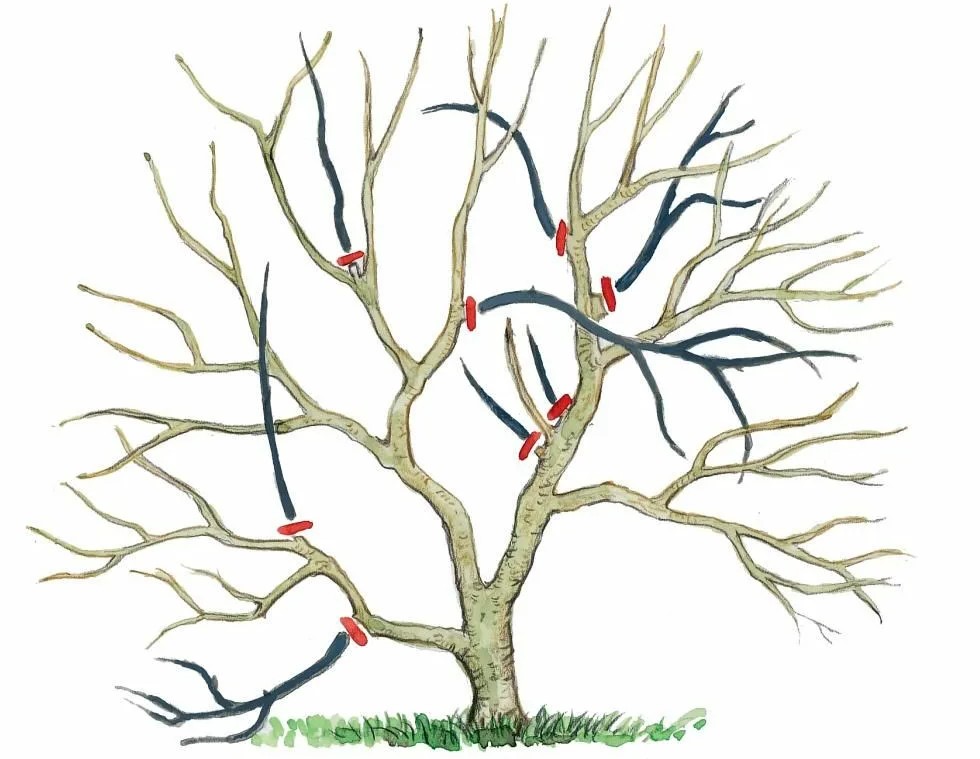
Root pruning
To stimulate the growth of new roots, you need to cut them by about a third each time you plant them. The cut areas need to be treated with a special powder.
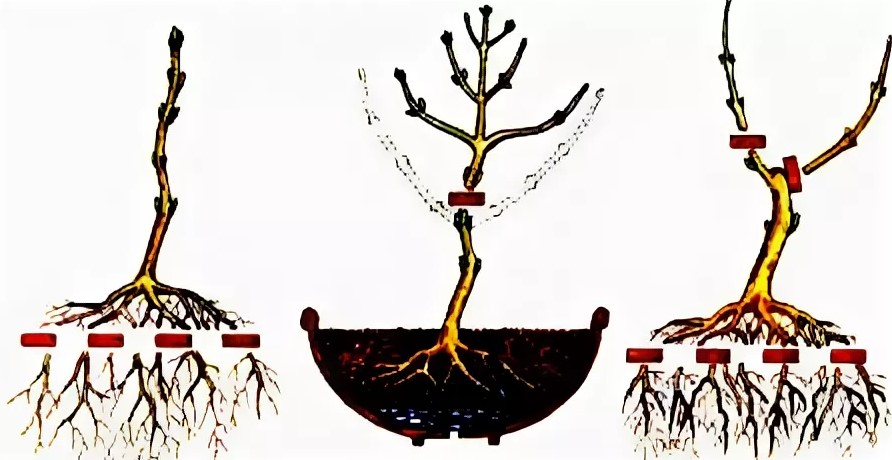
It is advisable not to cut the surface roots; if necessary, they can be directed in the desired direction using wire.
It is worth remembering that surface roots are very fragile, so be careful.
